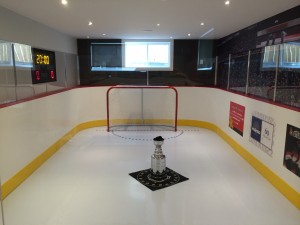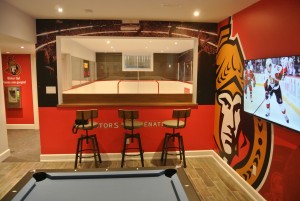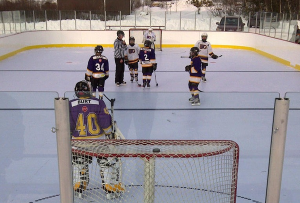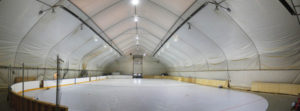General
The synthetic ice rink blog is dedicated to providing useful information to anyone considering a synthetic ice rink. The content is full of posts for hockey parents, hockey players, figure skaters, event planners, those interested in community recreation options, or those thinking about operating a synthetic ice training facility.
Heavy Duty Synthetic Ice
The term “heavy duty synthetic ice” is misused, abused, over represented and generally not well understood by potential buyers and customers. This article is going to clear all that up for you (and probably my competitors as well).
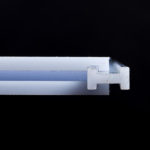
Heavy duty synthetic ice is defined by the following characteristics:
- The type of connection system
- The strength of the connection system
- The durability of the material
- The panel thickness
You see the industry has this false idea that if a product is thicker then we can call it “heavy duty” without any regard to the other criteria listed above. A thicker product does not make it heavy duty. You can have a product 3/4″ thick but using a weak dovetail or jigsaw puzzle connection system. In such cases, the joint is completely vulnerable to vertical separation. There is nothing heavy duty about that. Yet most competitors offer this. If the joint separates even a little vertically you have just created a very unsafe skating condition. The larger the rink, the bigger the potential problem because of expansion and contraction forces. Using the wrong connection system can cause problems when temperatures change.
I have witnessed cases where businesses spent hundreds of thousands of dollars on a rink. They dismantled it completely, never using it again.
In the image above it shows a connection system known as the H-Tongue or H-Spline system. My competitors hate it, scoff at it and call it old technology etc. The fact is this connection system has been around a while (30 years) and was even patented. But when it comes to connection strength, this product is the “mother of all heavy duty synthetic ice” connection systems. Why? It cannot be separated vertically or horizontally (unless you actually understand how to take it apart).
We actually test and have lab-verified results for the strength of our heavy-duty synthetic ice connection systems. I would love to compare results with other companies. However, the reality is that we also sell a jigsaw puzzle / dovetail system as well. But we are not so naive that we are going to call it “heavy duty” because we know better. The bottom line is that some products are better than others. Anyone can dismantle what most companies call a heavy-duty system. Moreover, these systems are easy to vandalize and even steal. This has happened in outdoor public spaces!
There is no one-size-fits-all in this business. So don’t fall for that type of marketing or salesmanship.
If you are considering buying synthetic ice as a business operator, a hockey training center, a community public rink or something similar, then you really should be concerned about panel joint separation. Not only could you prevent a potential safety issue, but possibly even avoid potential liability concerns. We offer three “heavy-duty synthetic ice” connection systems. We will consult with you about your intended application before recommending the best option.
If you are serious about wanting to put in the best products to get the best results over the very long term, then you owe it to yourself to consider a true heavy-duty synthetic ice connection system. Do your research when choosing the brand and type of synthetic ice rink.
skate at home
,aa As a hockey parent if someone told me that my kid could skate at home for less than a cup of coffee per day I would absolutely do that. Wouldn’t you? Probably you would.
As a hockey parent if someone told me that my kid could skate at home for less than a cup of coffee per day I would absolutely do that. Wouldn’t you? Probably you would.
But maybe you would need some additional information first such as “what the heck are you talking about!”
What I am talking about here is having your very own private synthetic ice training surface right in the comfort of your own home. Dollar for dollar its likely the best hockey training investment you can make for your kids. Most kids I know always did some kind of extra training to work on their skills. Could be shooting, quickness, agility, hands, anything really.
Imagine as a hockey dad you could all of a sudden work with your kid 1 on 1 and help them with all those little things you think they could improve upon. Their shot, stride and power. Even learning to hit is possible on synthetic ice. There really is no limitation as to what you can work on with a kid using synthetic ice.
In Canada we can offer financing to hockey parents who are looking to get that little edge over other kids. The payment terms on approved credit basis can be as long as 10 years. For 5 or 6 years on a 200 square foot surface you would literally pay less than what it costs for a cup of coffee daily.
You spend more on internet and cable TV than that!
So what are you waiting for? Get on the SmartRink site and check out the financing option that is best for you or just give us a call today. Read more about the rationale behind our synthetic ice rink pricing.
synthetic ice summer training
Imagine synthetic ice rink summer training for your son or daughter! That would be pretty cool right? That is exactly what a young hockey player from St. George NB will be doing this summer. He will be training on the 300 square foot synthetic ice surface his dad just purchased from us. They were here for a spring league hockey tournament and decided to come check out the product. They were impressed with the demo. It was impressive enough that they filled up the back of their SUV with synthetic ice panels for summer training.
As I chatted with the proud hockey parents, they were telling me how all their son wants to do is practice or play hockey. In all sincerity, this is the perfect hockey kid profile for synthetic ice. The parents who are already spending a lot of money on his budding hockey career will feel this synthetic ice investment was worthwhile for summer training. Meanwhile, the kid will be practicing and getting better every single day.
We talked about how they would really like him to get involved in some other sports like soccer or lacrosse. On the other hand, they said he loves hockey and they don’t push him into it. He chooses to do it. The easy conclusion for this kid is that he will use his synthetic ice all summer long and most likely every day. This makes synthetic ice summer training an ideal choice for him.
In this situation everyone is happy.
Learn more about synthetic ice rinks for hockey players.
Synthetic ice expansion
Synthetic ice expansion and contraction in larger community or commercial synthetic ice rinks can be problematic if proper care is not taken during the initial design stage.
In North America there are a lot of geographies that have “wild swings” in temperature. The change in temperature will have significant effects on polyethylene material – which is what most manufacturers use to make synthetic ice panel – albeit to various molecular weights and compositions – but rest assured it all expands and contracts with temperature change.
SmartRink knows exactly how much it will expand and contract from the machined temperature of 20 degrees Centigrade (about 68 degrees F). From this base line temperature we can consider the location design temperature. By that we mean to what temperature range must we design the rink according to. So we will look at historical temperature references by location – seasonal highs and lows – and size our rink relative to that. So what’s the big deal here anyway?
The big deal is that you need to be considering the synthetic ice expansion and contraction with relation to the perimeter boards if there are any, but also you need to be thinking about the forces of expansion and contraction and the effect it can have on the panel joints themselves.
The general rule of thumb I use is that the larger the rink the more important the type of connection system becomes. If it’s a full size rink for example then absolutely no question about it I would be recommending the H-Tongue heavy duty commercial connection system for your synthetic ice rink. It is by far the strongest system known in the industry. Most companies are selling their version of the dovetail or jigsaw puzzle joint system. We sell that as well. But I would never recommend that in a large installation as there is virtually no vertical sheer strength to prevent that joint from separating. It can work OK if the entire surface expands and contracts at exactly the same rate but that is rare because the effect of sun and shading is always present on different parts of the surface. One area for example might have sunshine on it while another area is shaded and full of frost. Then bad things will occur! The frosted area can literally be frozen in place while the sunny area is rapidly expanding. This in turn places tremendous expansion forces on the panel joints. When the expansion forces come up against the frozen panels they will still try to expand but because they are frozen possibly underneath they will not want to expand horizontally – but vertically and that is very problematic for a jigsaw puzzle type connection system. But this is no problem for an H-Tongue connection system to deal with. While it could still rise up, the joint will not separate. Eventually when the temperature changes it will settle down once again, no harm done.
Ideally however this does not happen at all. It’s really important to allow for horizontal panel expansion around the perimeter of the rink. If there are boards there then what we have experienced is that the boards should be placed on top of the synthetic panels all around the perimeter. The synthetic ice can not be anchored it has to be allowed to expand and contract underneath the perimeter boards. The boards then also need to be anchored in such a fashion that allows the synthetic ice expansion and contraction to freely occur.
So needless to say – there are a few critical things to think about and understand. Expert companies like SmartRink will do these calculations and design a proper system to provide you with trouble free operation over the long term with a view to temperature variables.
Basement Synthetic Ice in Dream Home
A Dream Basement Hockey Rink
SmartRink was very pleased to have been awarded the CHEO Dream of a Lifetime Lottery project including an Ottawa Senators “man cave” complete with a SmartRink basement synthetic ice rink.
The man cave boasts an Ottawa Senators themed bar, games area and SmartRink synthetic ice surface – complete with a locker room! The rink contains authentic hockey boards with acrylic glass to protect the walls and even a real life scoreboard. The wall mural is a Senators fan photo taken from a game.
The basement synthetic ice rink took about two days to complete. There were a few hurdles with the install, but the team from SmartRink was up for the challenge.
SmartRink President Tim Oldfield said “it was only a small job but it had it’s particular challenges, mostly due to the room already being finished when we started the job. In the end everything came together nicely and both Minto and CHEO were fantastic to work with.”
The CHEO Dream Home Lottery is a fundraiser for the Children’s Hospital of Eastern Ontario.
Want your very own basement rink?
Contact us today, or learn more about our synthetic ice rinks!
Recreational Infrastructure
Recreational Infrastructure in your Community.
Active people lead healthier, happier lives and have stronger connections to their communities. But, improved access to recreational infrastructure means more than just fit and healthy residents. It means more opportunities for social engagement, stronger community spirit and a boost to the economy by way of tourism, revitalization programs and additional revenue opportunities.
Did you know that recreation services are often seen as one of the most important factors in how appealing a community is to live in? Further more, the “equal access” nature of these facilities fosters a sense of inclusivity among community members. It promotes a sense of community pride and can even reduce criminal activity.
Despite the array of meaningful benefits, we see governments, at all levels, cutting back recreation budgets. So how do evolving communities and organizations keep up with growing recreational needs?
SmartRink™ has recently launched a turnkey program to get community rinks fully funded and installed. RinkFunder is an unique way to make lasting community improvements, with the addition of a year round premium skating experience –- fully funded all within 60 days.
SmartRink™ Community Rinks
Check out our community synthetic ice rink projects and ask how these innovative solutions can help you.
What You SHOULD Expect From Synthetic Ice
Synthetic ice is an opportunity for communities. We’ve seen it provide much needed recreational infrastructure, revitalize diminished shopping districts and even become a catalyst for tourism. Understanding what you should expect from synthetic ice is important, as it’s an alternative to real ice that offers various financial benefits.
Though it does require slightly more effort to skate on, synthetic ice should still be a premium skating experience. But, as with most products and services, quality and company expertise do matter.
What we see time and again are stories of failed synthetic ice projects due to improper product selection from companies that don’t have validated quality track records or adequate experience. Instances of raised edges, tripping hazards and difficulty skating are never acceptable.
Outdoor synthetic ice applications call for sinter pressed, very high molecular weight material, with a commercial heavy duty connection system. This not only ensures that the joint system won’t be compromised by changes in groundwork (such as frost heave) you can even flood over this product to achieve natural ice when weather permits and enjoy synthetic ice the rest of the year.
We understand that recreation budgets are limited and the lowest price can be attractive. But there is no doubt here, that cheapest never equates to best outcome. Tax payers deserve an experience that gives their community a boost — in physical activity, in business growth and in spirit.
Read more about our commercial synthetic ice.
Hockey Training Center
Synthetic Ice Hockey Training Center
Randy Robataille played hockey professionally both in the NHL and the KHL. Now he has turned his attention to his newest business interest – a synthetic ice hockey training center. The newly minted hockey training center is called RinkEye Development Center located in Kanata Ontario just down the street from where the Ottawa Senators play.
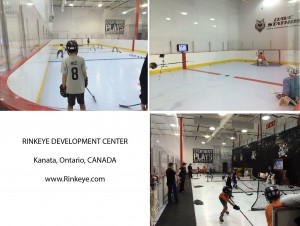
Randy is joined by former professional and NCAA goalie Dave Stathos. Jointly they can take an entire team in this world class center through a rigorous hour long training session with focus on individual puck skills, skating drills, and goal tender training.
Synthetic Ice Panels for Hockey Training
The centerpiece of this hockey training center is the center rink, which features SmartRink proFast1500-SG heavy-duty synthetic ice. Some of the comments we have heard so far:
“this product is amazing! and hardly any shavings come off the surface”
“after a single burst of speed I can glide around the entire rink!”
“The kids love it. They train in a t-shirt and shorts.”
SmartRink looked after the installation of the synthetic ice, the professional hockey boards, glass, perimeter netting and all the shooting lanes. It took three days to complete all the work.
How Much Does Synthetic Ice Cost?
People ask us this question the most. Comparing synthetic ice products is hard. Unless you know the material you are comparing it is almost meaningless. We’ve seen price per square foot as low as $8 and as high as $28. We’ve written about understanding the importance of molecular weight in the past and how that relates to panel thickness and pricing relationships.
For a true comparison send us a request and we’ll do our best to answer your questions directly with fact based information. You can click the following link to see our catalogue of synthetic ice panels.
The best raw material costs the most money and that directly translates into a higher cost panel – plain and simple. In the case of synthetic ice – paying less money is almost never a good thing.
For further information about this project or SmartRink please contact our office at info@smartrink.com
synthetic ice should never crack
First off let’s just say that synthetic ice should never crack!
Recently a homeowner called me about problems with his synthetic ice he recently purchased from a company located in Ontario Canada – I’ll save them the embarrassment by not naming them! Hey things can happen to products from time to time – but frankly not this.
He told me that his product was purchased only recently an that it was installed on a wooden base / deck in his backyard – what I would consider a very typical installation for Ontario, Canada. Anyway I asked him about the how the platform was constructed and it seemed to me that it was reasonably well made and suited the application. I also asked him is there was anything holding down the product to keep it from contracting and expanding and he said it was floating free. So far, so good.
The product he had was 3/8 inch thick and the sheets were approximately 4ft x 8ft – so basically machined from a 4ft x 8ft sheet. His surface was not large – maybe 12 ft x 24 ft.
He told me that their were cracks and broken pieces were the dovetail joints were together. I have never come across that. But then he also said that when he took some pieces apart he couldn’t fit them together again and that the material from one panel was now a different size than the panel beside it. So more clues.
So to me a couple things are going on here. First my educated guess is that he has a product that is on the lower scale as it relates to molecular weight of the resin used in making this sheet. As the molecular weight of polyethylene resin goes down the product becomes “harder” and more brittle. This is the only explanation. The cracks were either a result of poor machine tolerances when routered and was partly damaged when initially installed – or through forces of expansion and contraction and cold weather – the material didn’t hold up to the stress.
It’s also possible that part of his surface has sun (warmth) on it while other areas are still in the shade (cold). That places significant forces on an already weak system. One area of the synthetic ice could literally be expanding while another area is contracting or staying the same. On a weak connection system with inferior material – that spells PROBLEM.
So what to do? Well unfortunately the poor client paid a lot of money for inferior material. At the very least he should get his money back. When confronted he said the supplier pushed back and told the guy that it should not be installed outside in a Canadian winter and should be covered over. Ummm. Hello? This is Canada! We have extreme winter weather! Wrong answer. Time to report him to the Better Business Bureau – and that was my next recommendation.
So once again I maintain that synthetic ice should never crack! Products made with high quality resin of a very high molecular weight or better WILL NOT crack from cold, or expansion and contraction. Period.
I hope this article can save someone else out there from a poor product. Read more about why you should choose SmartRink for your synthetic ice rink project.
When to use commercial grade ice
We often get asked about when to use commercial synthetic ice verses residential synthetic ice. Probably a good place to start before we get into that is to explore the difference between the two.
The vast majority of panel systems sold today are residential – by our definition. At SmartRink we consider any panel that has little or no vertical sheer strength to be considered a residential panel. The panel thickness is NOT THE DETERMINING FACTOR. Ok so what is vertical sheer strength? There is a test that can be performed on panel connection systems that will indicate the force required to sheer apart two panel joints. So why is this important? This is important when determining the best product for your application. For example if you are considering an outdoor rink in any climate where there are wide temperature variations then you need to consider vertical sheer strength. Panel material WILL expand and contract with temperature changes. For example with a 20 degree Celsius (approx 36 degrees F) a 1 meter (about 39 inches) sheet of Pe will expand or contract about 2 mm (about 0.079 of an inch). This may not sound like much but if it was a 200 foot long rink then that would be almost 5 inches in movement. If the temperature variation was double that then the change is closer to 10 inches of movement! That is a realistic scenario in many North American climates.
Most companies claim to have commercial synthetic ice ice. They don’t. What they call a commercial panel is a thicker panel. So whether their panel is 3/8 inch thick or 3/4 inch thick the vertical sheer strength in most systems still amounts to almost zero.
This really shows up (in a bad way) when these systems attempt to put in goal creases and line markings in the rinks. Most use a “loose laid” colored panel (red line, blue line) and they are not positively connected to the surrounding panel system. It looks nice enough at first – but wait until the inevitable temperature change and voila – instant problem. Now you will see gaps and loose fitting lines where the puck can not even go over these areas. if water gets in there and then freezes – now the lines and panels are coming apart because there is no vertical sheer strength. The darker colored lines expand and contract at different rates verses the lighter colored panel material and this further causes problems.
We have seen this numerous times with competitive products. They are NOT well engineered for what we would consider a heavy duty commercial use system. This includes hockey training centers and larger inside or outside installations.
So in summary here are some scenarios for when you should use commercial synthetic ice:
– outside community synthetic ice rinks – any size
– most definitely in any climate where frost, ice, snow, are anticipated
– any location where there will be a significant change in seasonal or day to day temperature
– Hockey training centers or any application with directional weight shifts
– Any application where the substrate under the synthetic ice not perfect

